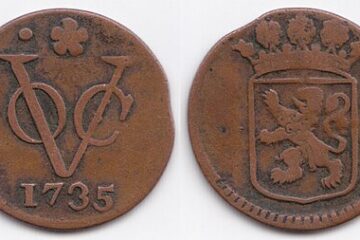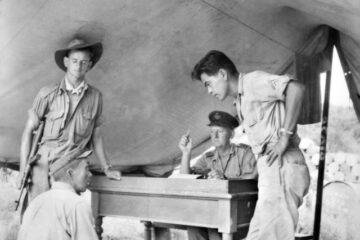This thesis from Dr. Judith Mirjam Rozeboom examines the lives and treatment of the Netherlands East Indies (NEI) people who resided in Australia during WWII and their return to their home country after the war. It compares the lives before, during and after the war of European Indonesians and indigenous Indonesians. It assesses their lives to that of other newcomers to Australia.
Her research connects underused Dutch archival material, only recently released to researchers, with sources in Australian archives to provide a fresh insight into the history of indigenous Indonesians in the Commonwealth from the start of the Pacific War to the official Indonesian independence in December 1949.
The work can be divided into three main parts. The first part examines the histories of the KNIL, Koninklijk Nederlands-Indisch Leger (Royal Dutch East Indies Army) and the KPM, Koninklijke Pakketvaart Maatschappij (Royal Dutch Shipping Company or Royal Packet Navigation Company) before the outbreak of the Second World War and the transition of both organisations into wartime conditions. With a component of transnational history, this military history focuses on the Indies army’s composition and development mainly in the pre-war period, continuing with the conversion into a refugee army on Australian soil.
The second part recreates the KNIL, KPM and Indonesian civilian histories in Australia until the war’s ending. A critical focus in this part of the thesis is on the legal aspects of the stay of all different groups from the NEI in their temporary homeland: the registration of aliens, the other status of newcomers to Australia, and the exact legal status of the NEI military, semi-military personnel, and civilians in the Commonwealth. She focusses on the legal positions of KPM seamen and negotiated special rights, extra-territorial rights, for the KNIL.
The third and final part closely examines the post-war period in which many indigenous Indonesians ended up behind barbwire and the negotiations between the Australians and the NEI ‘Government-in-Exile’, as well as the military high command.
The internment camps on Australian soil were occupied by the Netherlands East Indies’ people after WWII. I analyse why these NEI soldiers, semi-military personnel and even a few civilians were locked up in camps and not repatriated back to their towns and villages in the Indies. The research emphasises how the Indonesians returned to their home country, when and how they could leave the Commonwealth, and how they were received and perceived by their fellow countrymen and women.


